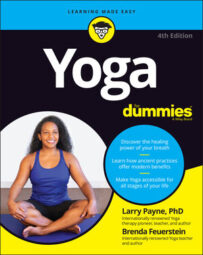Partner Yoga is a joyful practice that brings two people together to create a new posture. In contrast to what’s referred to as assisted Yoga, in partner Yoga, each person gives support and receives benefits as the two create a posture together. When you and your partner try this, you discover and enjoy one of the requirements and lessons of partner Yoga: dialogue and clear communication.
Consider the benefits of partner Yoga:
- Can be practiced by two strangers in a class
- Extends Yoga’s emphasis on experimentation and personal discovery to an experience shared with another person
- Utilizes traction, leverage, and kinesthetic awareness
- Involves engaging physically with another person, yet is not sexual
- Can add an element of delight when practiced by romantic couples
Partner Yoga is best practiced with someone your same size, but differences in height and weight can stimulate creativity to make the postures work.
The benefits of partner Yoga
Partner Yoga can be good for your health. By its very nature, partner Yoga is a playful practice and can even evoke laughter. Laughter can be a very healing experience, as Norman Cousins has taught the world.
Partner Yoga fosters your ability to trust and feel secure with another person. It gives you the opportunity to surrender to another individual and feel supported. That experience of trust on the mat can spill over to your life off the mat.
How comfortable are you with being touched? Partner Yoga isn’t sexual, but it involves touching. Because of differences in personality, personal experience, upbringing, and culture, the idea of touching another person during your Yoga routine may be more or less comfortable than the practice of going solo.
Although partner Yoga can help you address issues with intimacy, only you know your limits and what’s right for you. As with all other aspects of your Yoga practice, listen to and respect your inner voice.
Partner Yoga as a metaphor for living in the world
According to Cain Carroll and Lori Kimata, authors of Partner Yoga, the first axiom of partner Yoga is, “All things are interdependent.” Partner Yoga gives you immediate feedback on how you interact with your partner and, by extension, with others in your life. For instance, if one person pushes too far, both will fall over. Now how’s that for immediate feedback?
Consider the opportunities for feedback that partner Yoga offers:
- Do you communicate your needs?
- Do you listen when your partner communicates his needs?
- Are you sensitive to the subtle adjustments and movements of your partner?
- Do you give support when needed?
- Are you flexible enough to allow your partner to move with ease yet maintain your own integrity?
- Can you find that healthy medium between rigidity and flexibility?
What new shapes can you and your significant other make if you pair up for partner Yoga? For a totally unique and personal holiday greeting card, enlist the help of a friend with a camera or a smartphone, bend and blend yourselves, and shoot away. The partner tree pose is often a favorite holiday shot.

